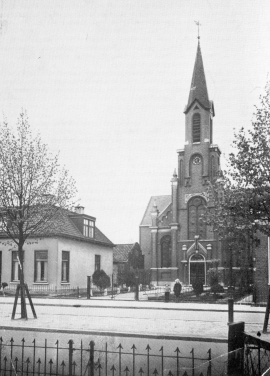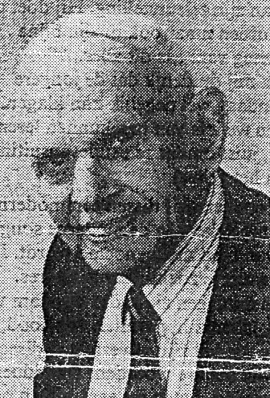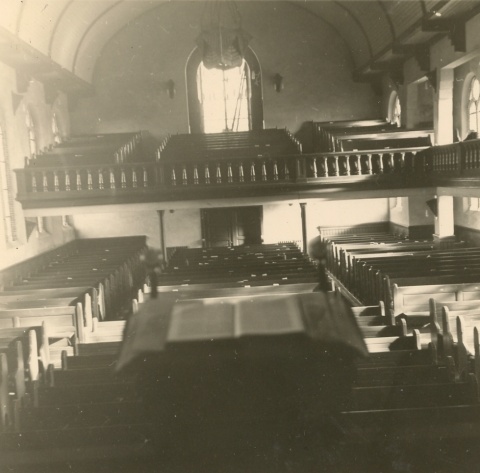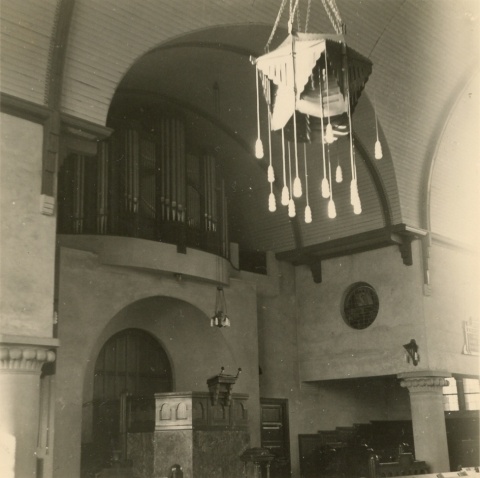
Sense's Reminiscences
by Sense de Jong
- Geurt
- Tante Betje (by Sense)
- Tante Betje (by Truus)
- Miss Roozendaal
- Concert in Winschoten
- A baptism remembered
- My birdhouse
- War veterans
- Henk Smit - bass/baritone
- Stefan
- In memory of Herman - I
- In memory of Herman -II
- Remembering AK
- Our love for music
- Herman - Promoter of Christian Causes
- A Salem evening with Herman de Jong
- From Elsinore to Monschau
- A Danish Treat
- Glimpses of Thuringia and Saxony
- Domie and Hansie
- La Manche, Newfoundland
- Bermuda - Isle in the Sun
- 1932 and 1934
- 1940 - 1945
- Winschoten, Grace on the Venne
- 1948
- Johann Sebastian Bach
- From Generation to Generation
- Seven children and a harmonium
- K.P. - A Man of Enterprise
- Cuba and the tragedy of the MS St Louis
- It all began in Norwich, Ontario
Another site by Sense de Jong:
~ Hinne de Jong ~
A Chronicle
Sites by Henry de Jong:
~ Herman de Jong ~
Memorial
~ Newmaker Notes~
Writings, Pictures, Collections
~ AACS/ICS Niagara Conferences~
1970 - 1991
“Remember your leaders, who spoke the word of God to you. Consider the outcome of their way of life and imitate their faith. Jesus Christ is the same yesterday and today and forever.”
(Hebrews 13: 7-8)
It’s 2014, I just turned 80, and I’m about to write a story about my childhood impressions of our church and a much loved pastor. That’s more than 70 years ago!
Before my youngest brother and sister were born, ours was a family of six. I was the youngest of the four kids. On Sunday mornings, during the early 1940s, we would walk together to our church in Winschoten (in the northern province of Groningen, the Netherlands). Our family was “Gereformeerd” (Reformed), so we went to the Vennekerk, located on the Venne in Winschoten. Our pastor was Rev. Jan Roelof Hommes, our much beloved “dominee.”
On the Saturday before, it was customary in “Gereformeerde” homes to make certain preparations for the Sabbath. The de Jong family home was no exception. Potatoes had to be peeled, meat and veggies had to be prepared for the Sunday noon meal. My duties included making the home from the outside look acceptable: sweep the side walks, clean the yard, rake the garden and flower beds. Shoes had to be polished, ready for the trek to the church. We all had to have a bath. Since we had no bathrooms this meant bringing pail after pail to a near boil, then dump the contents in the wash “tobbe” (portable tub). When we were little we would climb on the kitchen granite counter in the “au naturel” and sit in the “tobbe” so Mom could scrub us. There were no curtains, only sheers, in our kitchen, or in our neighbour’s kitchen! This happened in many homes, can you imagine?
I vividly remember those walks to church. Leaving the Acacialaan, we crossed the St. Vitusholt, and continued walking along the Dwingelooweg and the Engelstilstraat to the Venne. My parents took the lead and we kids followed. My Dad had a kind of a rolling gait, and his right shoulder was always a bit higher than his left side. We always walked, we never biked. Only out-of-town people biked. Among them was the family of Harm and Dina van der Laan of the nearby village of Blijham. Led by tall, bald, Mr. van der Laan Sr. they would enter the church and sit right in front of the de Jong clan. Little did we know that their eldest daughter, Stiny, would one day (in Canada) marry my brother Herman!




We entered the church on the east wing, rather close to our regular seats somewhere in the middle toward the front. As a kid the enormous size and height of our church greatly impressed me. Our church could seat about 1100 on the main floor, with a further 400 or so on the balcony in the back of the building. The church had a front part, a much larger middle section with wings on each side. A huge pipe organ was built high above a massive pulpit. Small raised wing sections were located to each side of the pulpit. When the elders entered they went to the left of the pulpit. The deacons sat to the left. I liked to observe the deacons when they were called upon to take up the collection. The appointed men, all dressed in black, would go to the front of the church to pick up what looked very much like fish poles, with little pouches on the end. They would then negotiate these long poles through row upon row all through the church. No small task. Occasionally, they would knock a ladies’ hat off here and there (it happened to my dad in an other church!).Young people, being young people, have been known to collect all the pennies they could find and one of them would dump the whole load into one of the pouches. The sudden extra weight would sometimes tip the heavy bag onto the floor with coins flying everywhere! When something of an embarrassing nature happened, I would become squirmy next to the safe place beside my mother. She usually had her arms folded in front of her and somehow, unseen by anyone in the church, she would give me a vise-like pinch with her fingers, meaning: sit, and sit still! My arms still hurt when I think about it. Also…I frown on squirming in our church today.
In the early 1940s we had a steady organist with the name of Mr. Groeneveld. He seemed to have been there forever…his playing kind of showed that as well. In later years we got a certain Mr. Koster, a much more able and livelier organist.
Each Sunday morning was much similar to other Sunday mornings. Families arrived and went to their usual places. I believe in those days, certain wealthy families had “bought” their seats. No one else, and I mean no one, ever sat in their pews. As a small boy I observed many things, for example, the way mothers of large families and other ladies would sit down. Having arrived at their regular seat, they would stand there and then, with both hands, reach down to lift up the back part of their coat, lift it up and fold it upwards after which they would carefully sit down, in order to prevent crinkles if they sat on it! My mother did the same. I thought it was the “gereformeerd” thing to do. Many men, especially the prominent men in the audience, would not sit down right away, but remained standing in an attitude of silent prayer. I learned later that this definitely belonged to the “gereformeerd” tradition: men, being the heads of the families, asked the Lord to bless the preaching of God’s Word.
At about 9:55 a.m. I watched for a little red light to go on. It was located high above the pulpit just below the organ. And there it was! It said “Vrij,” which means “Free.” It was triggered to go on by our custodian, Mr. Ploeger. It meant: sit wherever there was room! At about 9:59 a.m., Mr. Ploeger hit another switch. A little light went on high above by the organ and old Mr. Groeneveld, expecting this, brought his prelude (or whatever he was playing) to a satisfactory (or unsatisfactory) close. At this point, the door next to the pulpit opened and all eyes were on the “dienstdoende ouderling” (serving elder) who led Pastor Hommes to the bottom of the stairs to the pulpit, shook his hand and sat down. Other elders and the deacons filed in and went to their places. All were dressed in white shirts, black ties, black jackets and striped pants. Pastor Hommes always wore his distinguished- looking (black) toga. This scene, just described, made a lasting impression on me (and I venture to say on many more). But what happened next would forever stay with me.
The entire church went quiet. A hush came over the congregation. Perhaps it was the solemnity of the moment. Pastor Hommes stood at the lectern and looked at his flock. Then in his inimitable voice he said, in Dutch:
“Onze hulpe is in the naam des Heeren, die hemel en aarde gemaakt heeft. Amen. Genade zij u en vrede van Hem, die is en die was en die komen zal, en van de zeven geesten die voor zijn troon zijn, en van Jezus Christus, de getrouwe getuige, de eerstgeborene der doden en de overste van de koningen der aarde. Amen.”
Which, translated, means: “Our help is in the name of the Lord, who made the heavens and the earth. Amen. Grace and peace to you from Him who is, and who was, and who is to come, and from the seven spirits before His throne, and from Jesus Christ, who is the faithful witness, the firstborn from the dead, and the ruler of the kings of the earth. Amen.”
He then proceeded with the liturgy so familiar to us. He led the entire service. I cannot remember other people participating. His services were always sober. We all looked forward to his reading of the Scriptures and his well-thought out sermons. Rev. Hommes loved to preach and his enthusiastic way of speaking held everyone spellbound. Always, his sermons pointed to the central message of salvation through Jesus Christ, our Lord. He boldly “proclaimed God’s Word in all its purity.”
We loved this man. Most of my siblings remember the way he conducted the Heidelberg Catechism classes each week. In those days, these were held in “’t Olle Hok,” a little ramshackle building that stood in the in the garden of the parsonage next to the church. He was always ready to listen to anyone: the young, the middle-aged, the elderly. He helped my dad during a very troubled period in his life (see my story “Pa talks again” in the addendum of Hinne’s Chronicles above). He always rode a bike and I still have visions of him racing to some appointment in the streets of either Winschoten or Groningen. I recall him during our church’s evangelistic outreach as a street preacher holding forth on a public square in our city.
Rev. Hommes served for ten years as a member of our church’s General Synod. He did much for the churches throughout the province of Groningen, indeed, throughout the country as a whole. He was also much involved in missions. He was honoured for his work when he was appointed an Officer of the Order of Orange-Nassau.
Rev. Hommes was a very humble, deeply committed man. He interrupted his doctoral studies in the 1930s so that he, a candidate for the ministry, could minister to the dike workers living on a specially- built island in the “Zuiderzee.” These men were engaged in the enormous construction of the “Afsluitdijk,” which , once it was finished after many years, cut off the North Sea from the “Zuiderzee.” He served the “Gereformeerde” churches in Zuidwolde (1932-1941), Winschoten (1941-1952) and spent the rest of his career pastoring churches in the greater Groningen City area.
Unbeknownst to us and our congregation in Winschoten was the fact that Rev. Hommes, during World War II, was deeply involved in the resistance movement, Even today, we don’t know precisely what that meant. Did he help hide Jews? Was he a member of one or more resistance organizations operating throughout the Netherlands during the war? Did he assist in helping hide the British or American crews of bombers, many of whom crashed in the country around Winschoten. Rev. Hommes amazingly escaped the clutches of the Grüne Polizei on March 5, 1944, when they staged a raid (razzia) during one morning service (for further details see my story “1940-1945” above).
Before I emigrated to Canada in 1953 I asked him to sign an attestation saying that I was a boy of good character, etc. I guess the authorities needed that document before they would let me go out of the country. I still have that written document. He signed that statement with his name “j.r.hommes, v.d.m.” Later I found out what those three letters at the end meant. V.D.M. means “Verbi Domini Minister,” servant of the divine Word of God.
And that’s how all his parishioners will forever remember him!
“And we know that in all things God works for the good of those who love him, who have been called according to his purpose. For those God foreknew he also predestined to be conformed to the likeness of his Son, that he might be the firstborn among many brothers. And those he predestined, he also called; those he called, he also justified; those he justified, he also glorified.”
(Romans 8: 28-30)
[an error occurred while processing this directive]